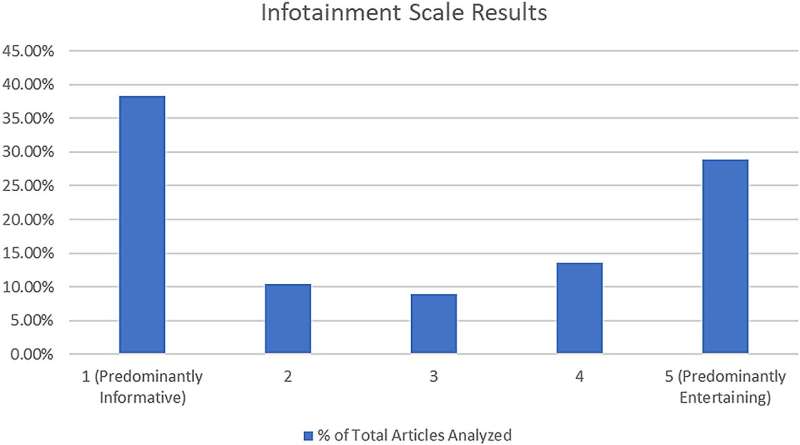This article has been reviewed according to Science X's editorial process and policies. Editors have highlighted the following attributes while ensuring the content's credibility:
fact-checked
trusted source
proofread
'Infotainment is coming for your news,' warns academic

There are plenty of reasons to worry about the quality of contemporary Canadian journalism beyond shrinking newsrooms and attention spans.
Once considered a vital pillar of a healthy democracy, the country's biggest newspapers have been embracing the type of content critics refer to as "infotainment," which uses entertainment-style methods to communicate politically relevant information.
In a new paper published in the Canadian Journal of Political Science, Ph.D. candidate Robert Marinov examines, measures, and evaluates the scope and nature of infotainment in Canada's largest newspapers.
Using the 2019 federal election as a case study, Marinov analyzed news stories from the Globe and Mail, Toronto Star, the National Post, Montreal Gazette, Calgary Herald and the Vancouver Sun. Given the high volume of duplicated articles between the latter four Postmedia newspapers, they were grouped together for the purposes of analysis.
Marinov collected 969 distinct hard news items over the campaign's 41 days. Using a mixed-methods mode of discourse analysis, he assigned them a score of one to five, one being predominantly informative and five being predominantly entertaining.
He found that 51 percent—more than half—of all hard news articles showed clear evidence of substantial infotainment traits (rating three to five), and 42 percent demonstrated strong to very strong infotainment characteristics (four or five).
On the other end, almost 49 percent of the articles in the dataset showed no (rating one on five) or few (two on five) entertainment characteristics.
Articles with significant infotainment characteristics (four to five rating) comprised 52 percent of Postmedia hard news items. That number drops to 39 percent for the Toronto Star and 35 percent for the Globe and Mail.
"There is a fair amount of research that shows more conservative or right-wing political narratives tend to engage in more emotional discourses compared to more left-wing discourses, which tend to be more rationalist," Marinov says.
"We did hypothesize that these ideological differences might contribute to some of the results we found in Postmedia, which is typically more right-leaning than the Globe and Mail or Toronto Star. But it is hard to quantify by how much or to confirm this without further research."
Still 'a strong amount' of analytical and investigative coverage
Marinov synthesized previous literature on infotainment to create a comprehensive framework that could stand up to robust investigation. Three categories emerged.
The first was personalization. This entails a focus on politicians and their personal characteristics, their private lives, their appearances, their manners of speaking, their behavior and actions during an election campaign.
The second is sensationalization. This focuses on gaffes, scandals, the sensational framing of topics and emotionally driven narratives.
Both combine to serve the third category, decontextualization, where the focus is on speculation and strategic game-framing—who is ahead in the latest poll, who scored points on the campaign trail, who performed a good trick or stunt—without any focus on actual policy options.
Despite the large volume of infotainment found in mainstream Canadian newspapers' political coverage, Marinov says he is still somewhat relieved that it is not any higher.
"It is promising to see that there is still quite a strong amount of coverage that adopts an analytical or investigative tone that presents more concrete, substantive information about policy options and debates," he says. "But the numbers also show that the infotainment approach has a lot of purchase in Canadian newspaper coverage. This can have important impacts on how voters are being informed during an election."
More information: Robert Marinov et al, Infotaining Canadian Politics? Measuring Infotainment in English-Language Newspaper Coverage of the 2019 Canadian Federal Election, Canadian Journal of Political Science (2023). DOI: 10.1017/S0008423923000586
Provided by Concordia University


















